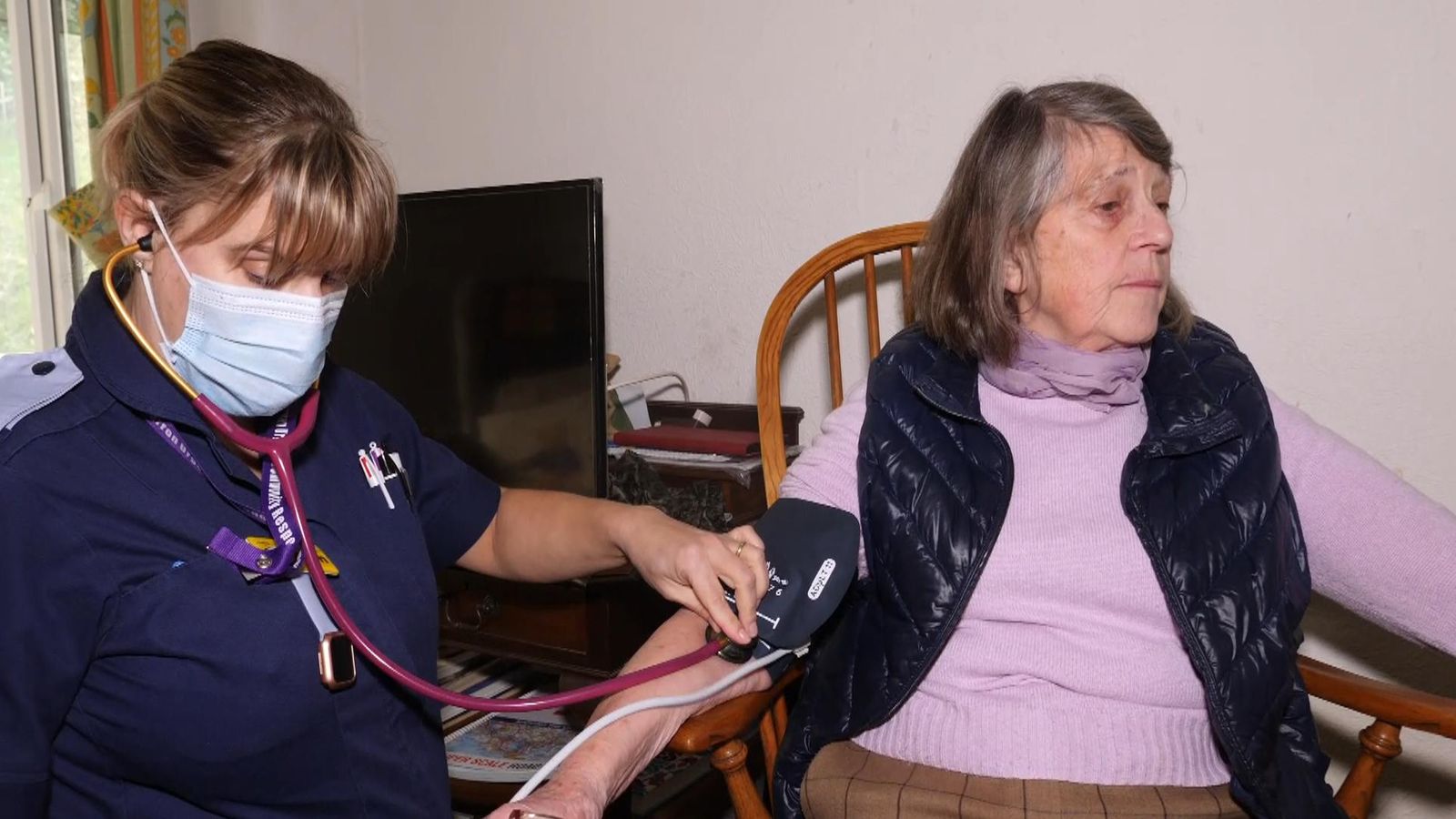Elizabeth Simpson is recovering from a nasty bout of pneumonia.
Her oxygen levels dropped so low that she was in danger of being hospitalised.
That made her feel anxious because at 80 years old she didn’t want to be separated from her family.
She also knew she would be at greater risk of a hospital-acquired infection.
That was a valid concern as the latest NHS data shows COVID infections caught in hospitals are rising.
“If you go into hospital at my age you might catch something else. It’s much more relaxing at your own home because you can go to bed, have a cup of coffee or whatever you want and the side effect of it all is people having to visit you in hospital – the stress,” Mrs Simpson said.
Luckily for Mrs Simpson she was referred to the virtual wards team at Frimley Park Hospital in Surrey.
This unit, one of the first in the country to set up a remote hospital service, is tasked with treating acute patients at home.
This has benefits for the hospital and the patient.
Firstly it stops unnecessary patient admissions and also helps with the discharge of patients who can continue their treatment at home.
This eases pressure on hospital capacity, improving the flow of patients through the system.
Secondly, patient recovery times are known to improve when treated at home.
One of the nurses visiting Mrs Simpson at home is Gemma Cash, an advanced clinical practitioner with Frimley Health NHS Foundation Trust.
Mrs Cash says she has seen an improvement in the treatment of patients like Mrs Simpson.
“We didn’t have to wait for her to get into an ambulance to go to A&E, to wait in the queue in A&E to be assessed. From 111 we’ve cut out that middleman and we come straight here and do that assessment directly,” she said.
Read more:
NHS to treat 50,000 elderly and vulnerable patients in ‘virtual wards’ at home
Virtual hospital wards no substitute for real people, says patient waiting for hip operation
NHS crisis: Patients share their negative and positive experiences
Virtual wards, remote monitoring and rapid discharge teams are all part of the wider government effort to ease pressure on the NHS.
Trusts that have been able to employ these specialist consultant-led teams report some success with the easing of pressure on acute services.
It is a model that the NHS is likely to pivot towards in the future as more emphasis is placed on preventing patients needing to attend hospital and stay for ongoing treatment.
But the success of this programme is dependent on the recruitment and retention of trained staff.
There is already a shortage of nurses and the workforce crisis extends right across the NHS.
It also does not address the long-term crisis in social care which is driving the pressure on hospitals who are unable to discharge medically fit patients. This number has grown again to almost 14,000 across England.
This and the recruitment and retention of trained staff is an ongoing problem for doctors like Lucy Abbott, consultant geriatrician and chief of service for community services and older peoples’ medicine, who established Frimley’s virtual ward team.
Click to subscribe to the Sky News Daily wherever you get your podcasts
Dr Abbott told me: “Clearly workforce is our biggest, biggest challenge, and we need to have highly skilled professionals looking after people with frailty and as you say, that care, that support from social services as well.”
I asked Dr Abbott if her service could be a substitute for a lack of social care.
“No, no,” she replied. “We have to work together.”
The pressure on the NHS is easing slightly. But it would be a dangerous mistake to think the NHS winter crisis is over.
The workforce shortages, compounded by ongoing industrial action by nurses and ambulance workers and need to address the serious problems in social care, mean the pressure is likely to continue for some time.






















